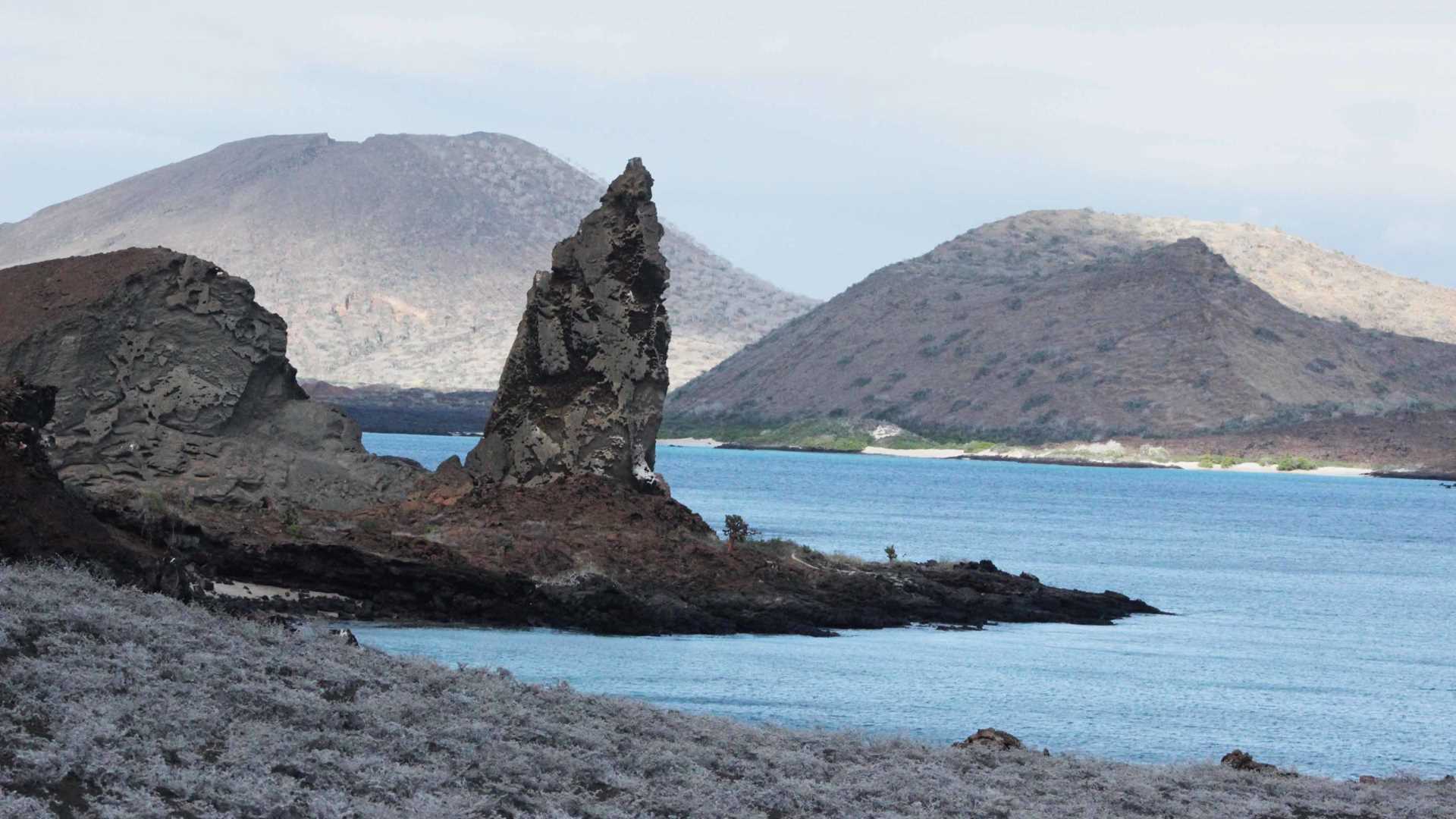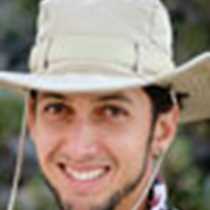Today we visited one of the youngest islands of the archipelago, but one also located right at its center. This island was formed around 700,000 years ago, and it was a good opportunity to understand how the early formation of volcanic islands.
The relatively fresh lava flows, lava tubes, and spatter cones around the volcano structure are part of the scenery of this island. Very few plants have colonized this new island and those who did are very special. On our hike, we found the four pioneer species growing from nutrient poor soil—and even straight from the lava flow.
The morning continued with a visit to the beach next to the Pinnacle Rock, one of the most iconic natural landmarks of the Galapagos, where we swam and snorkeled. Cold currents had arrived and with them many fish, including white-tipped sharks.
In the afternoon, we visited Chinese Hat, right across from Santiago Island. It is a young islet surrounded by lava flow that’s less than two centuries old. The area is an important nesting site for penguins, who seemed to pose for pictures on the shore just a couple meters from our Zodiacs. Snorkelers explored the channel between the two islands and had the chance to see penguins hunting for fish.







